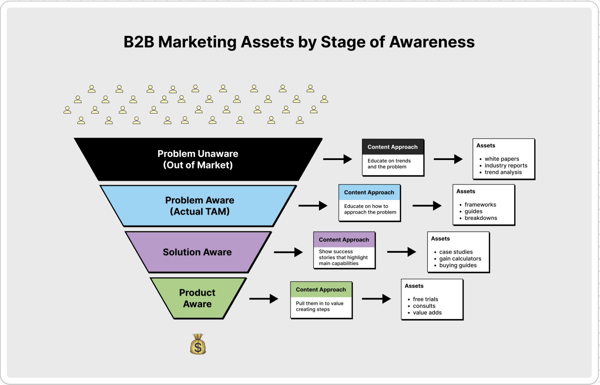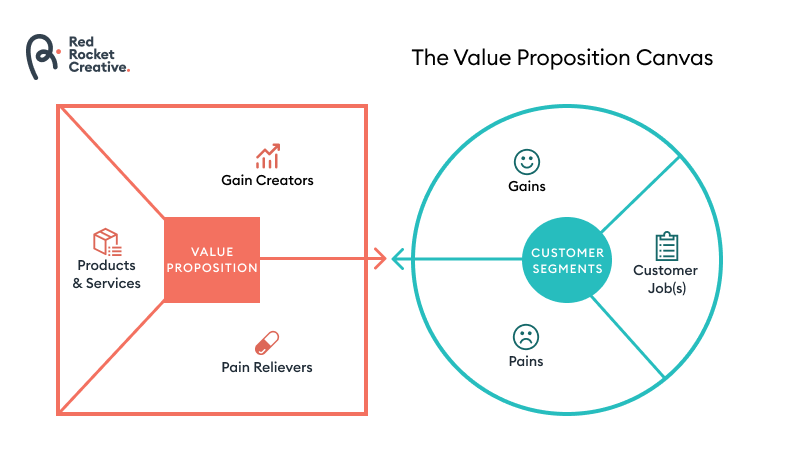Remaining current with your marketing tactics ensures program performance. Content strategies that worked just five years ago may be less effective now, and using current techniques will bring better results with the same amount of effort and resources.
Key takeaways:
- Today we first address the questions, "How does your content benefit your audience?" and "Why would they prefer your content over your competitors'?"
- Instead of using general KPIs, we identify ones specifically tailored to our client's business.
- We design targeted messages for the smallest market segments.
- We produce content for each stage of the buyer's journey, also known as the marketing funnel.
- Rather than repurposing content, we repurpose concepts.
- We carefully monitor trends, as neglecting current developments can lead to decreased efficiency and missed opportunities.

According to Semrush research, 80% of successful content marketers attribute their success to a well-documented strategy. Our experience with numerous customers confirms this daily. As content marketing best practices continue to evolve, so does the approach to content strategy.
Business growth strategy and content marketing within it
Five years ago, we would start building the content strategy by considering our client's overall business growth strategy. We would make you answer the following questions
- What products or services are you focused on promoting?
- What industries, if any, do you specialize in?
- What size of companies/budgets do you want to work with?
- What is your team really good at? What makes your offering special? (Read more about this in Can You Articulate Your Value Proposition?).
This part didn't change. If our customers don't have clear answers to these questions, we go and fix their brand positioning first.
Secondly, we would define the content goals. Every content should have a purpose. Are you cross-promoting to get more business from existing clients or attracting new clients in a specific industry?

Today, we aim to not only understand your goals, but also clearly answer the questions, "How does your content assist your audience?" and "Why would they choose your content over your competitor's?" Competition is fiercer than ever before. Even without the influence of AI in content creation, more companies view content as the key to marketing. They allocate substantial resources to content production, resulting in a significant increase in content quality and quantity.
We establish the Key Performance Indicators (KPIs) early in the content strategy process. The metrics we outline, such as website visits, generated leads, social media mentions, and engagement, depending on the goals set. Later, we use tools like SEO software, Google Analytics, and HubSpot to report these metrics to our clients.
Identifying the right content for the right target audience
Today, we are going much deeper and more granular in the description of our audiences. Working with general buyer personas for the business as a whole is not enough, even if your company is small. The markets are very fragmented, and every segment needs dedicated content.
The best way to represent these fragmented markets is a Rubik's cube. We write down personas on the red side, use cases for products and services on the blue side, and the decision-makers roles on the yellow side. In this way, we get all the fragments you need to address with content.
This approach helps us stay focused, prioritize, and create personalized messages for every market segment.

Buyer's Journey or the Funnel
Content marketing is fundamentally about marketing; no marketing strategy is complete without a funnel. We use a straightforward, classic marketing funnel with four levels.
Five years ago, we referred to these stages as:
- Awareness: The buyer acknowledges a problem or challenge but hasn't necessarily identified it yet.
- Interest: The buyer has defined the problem and is considering various solutions.
- Consideration: The buyer has decided on a solution and is comparing different products or vendors to find the best fit.
- Decision: The buyer chooses a specific product or vendor.
Today, we use the following terms:
- Problem unaware
- Problem aware
- Solution aware
- Product/service aware
This classification is essentially the same, but the updated terminology is easier to understand and better implies the focus of the content we're creating for each stage.

Image source: Robert Kaminski
Let's skip information about content formats and content creation for now and get straight to the distribution because this is the part with the biggest shift.
5 years ago, we were talking about content distribution. Today we are talking about a multi-channel content strategy and concept repurposing.
While the channels we use to deliver our client's content to their audiences have remained the same, our approach has changed.
- Social media ads or third-party ad placements
- Influencers
- Relationships with vendors or partners in your industry
- Organic search
- Organic social media
Suppose we have created a blog, an educational video, or a lead magnet. Previously, we would announce this content via a newsletter, on social media, run ads, optimize it for SEO, ask our partners to share it or pay influencers to promote it.
Today, we concentrate on the primary message. If we have long-form content, we break it down into smaller pieces, tailor them for each platform we plan to use, and create a publishing schedule that spans weeks or even months. These small content bites should usually serve the upper level of the funnel.
We do concept repurposing instead of content repurposing. We strongly advise against publishing unadjusted content on different channels, although it might have the same format.
Bonus >> Content trends that we are watching closely
As you've read this far, we can't leave you without a bonus, which can be helpful in thinking about content. Here are the most important trends which have a huge influence on our strategies:
- Video has established itself as a major form of content, but podcasts are quickly catching up.
- Brands are following in the footsteps of creators by learning from them.
- Search continues to evolve, with AI, social, and voice search becoming more prevalent.
- The debate over AI-generated content versus human-generated content rages on.
- There's no getting around the need for a multi-channel content strategy.






